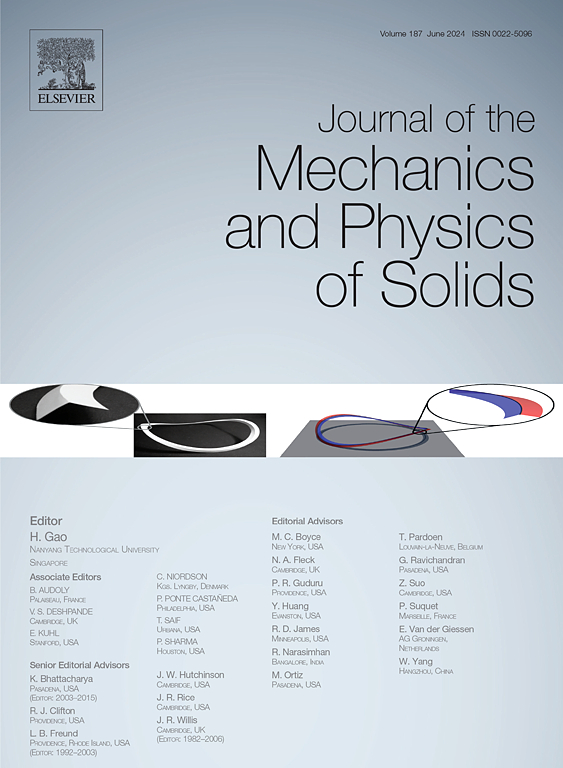Multi-scale modeling of hydrogel-based concrete formed under the ambient environment and the extremely harsh environment of Mars
IF 5
2区 工程技术
Q2 MATERIALS SCIENCE, MULTIDISCIPLINARY
引用次数: 0
Abstract
Hydrogel-based concretes (HBCs) are an emerging class of load-bearing composite materials consisting of inert particles joined together by micro-hydrogel joints. As HBCs can harden via sol-gel process and H2O phase changes under a freezing temperature and vacuum, they are suitable for future exterritorial constructions. Previous studies have demonstrated that the internal microstructure of the hydrogel joints in HBC varies significantly with curing temperature and air pressure, leading to variations in their mechanical properties. In this study, we present a new multi-scale model that quantitatively predicts the mechanical properties of HBC formed under different curing environments including Martian atmosphere. On the micro-scale, four representative joint microstructures are studied, including tubular, foamy, honeycomb, and tube-cased-foam joints. We experimentally studied and analytically derived the constitutive relationship between the joint force and displacement. Particularly, we determined the process of hydrogel skin peeling from the particle's surface of tubular joints based on force and energy equilibrium. On the macro-scale, we simplified the constitutive joint relationships in a linear parallel bond model (LPM) and employed them to quantify interparticle relationships in a discrete element method (DEM)-based HBC model. The Weibull distribution is used to consider the variation of tensile and shear strengths of the hydrogel joints in the DEM. The modeling results are not only validated with the experimentally acquired compressive stress-strain curves of HBC, but also accurately predict the combined influence of mix design and curing conditions on the mechanical properties.
求助全文
约1分钟内获得全文
求助全文
来源期刊
CiteScore
9.80
自引率
9.40%
发文量
276
审稿时长
52 days
期刊介绍:
The aim of Journal of The Mechanics and Physics of Solids is to publish research of the highest quality and of lasting significance on the mechanics of solids. The scope is broad, from fundamental concepts in mechanics to the analysis of novel phenomena and applications. Solids are interpreted broadly to include both hard and soft materials as well as natural and synthetic structures. The approach can be theoretical, experimental or computational.This research activity sits within engineering science and the allied areas of applied mathematics, materials science, bio-mechanics, applied physics, and geophysics.
The Journal was founded in 1952 by Rodney Hill, who was its Editor-in-Chief until 1968. The topics of interest to the Journal evolve with developments in the subject but its basic ethos remains the same: to publish research of the highest quality relating to the mechanics of solids. Thus, emphasis is placed on the development of fundamental concepts of mechanics and novel applications of these concepts based on theoretical, experimental or computational approaches, drawing upon the various branches of engineering science and the allied areas within applied mathematics, materials science, structural engineering, applied physics, and geophysics.
The main purpose of the Journal is to foster scientific understanding of the processes of deformation and mechanical failure of all solid materials, both technological and natural, and the connections between these processes and their underlying physical mechanisms. In this sense, the content of the Journal should reflect the current state of the discipline in analysis, experimental observation, and numerical simulation. In the interest of achieving this goal, authors are encouraged to consider the significance of their contributions for the field of mechanics and the implications of their results, in addition to describing the details of their work.

 求助内容:
求助内容: 应助结果提醒方式:
应助结果提醒方式:


